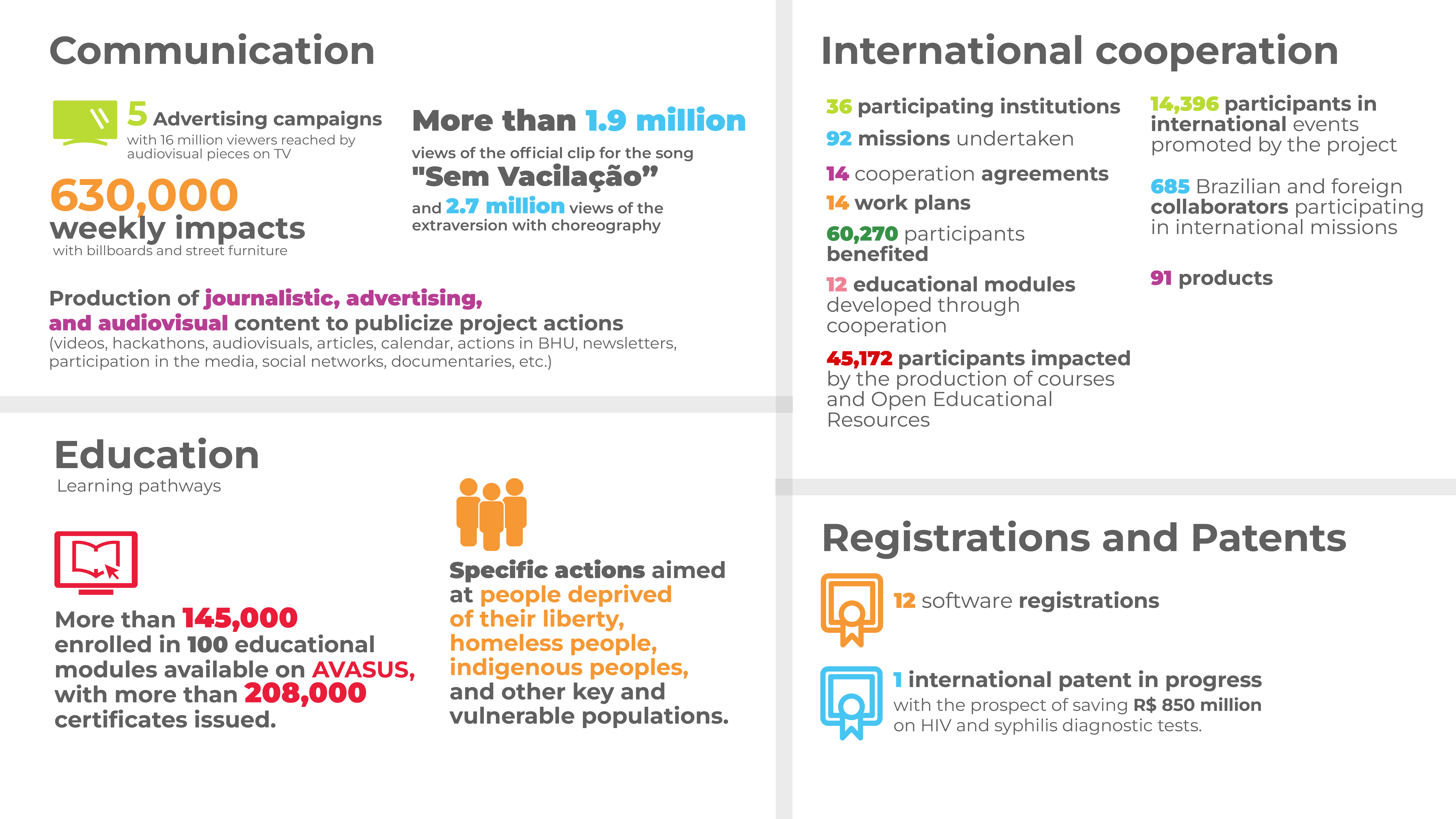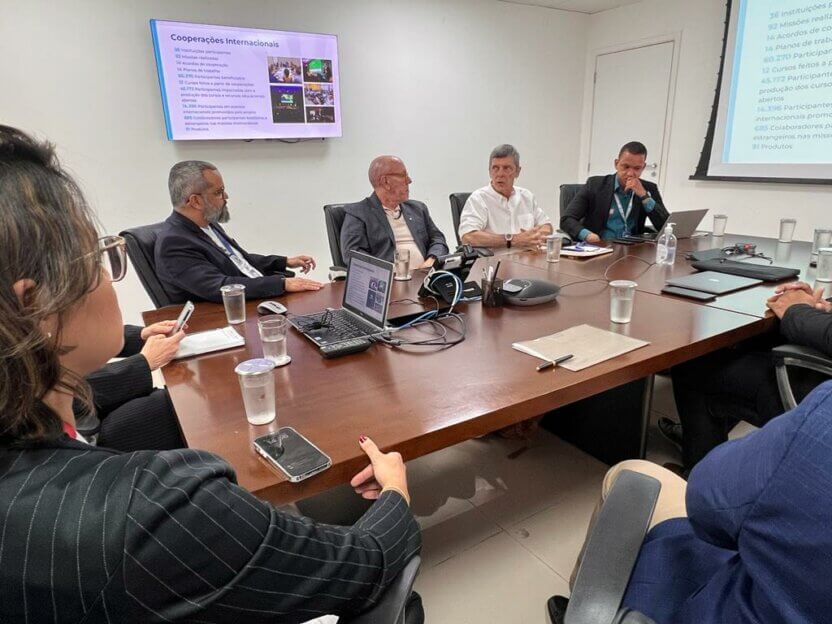By Valéria Credidio – Assessoria de Comunicação do LAIS (ASCOM/LAIS)
An international patent that can save the public coffers more than R$850 million in a few years, if the Brazilian National Health System (SUS) decides to incorporate it. This is the patent for the multi-test, a piece of equipment that, with the same blood sample, can check whether the patient is infected with HIV or syphilis. One of the preliminary results of the “Syphilis No” Project, was carried out in a partnership between the Laboratory for Technological Innovation in Health (LAIS/UFRN), the Brazilian Ministry of Health, and the Pan American Health Organization (PAHO).
This patent, the result of the international cooperation developed during the project, also involved researchers from the United States and Portugal. At the moment, the rapid tests purchased in Brazil are imported and are unable to fully resolve the issues related to testing, as they are disposable and do not link the test to the patient’s electronic medical record in an automated way – which often results in the need for other complementary tests. This is quite different from the multi-test developed by LAIS/UFRN researchers in the “Syphilis No” Project, which, in addition to being cheaper, is also a point-of-care digital health solution, i.e. it is available digitally at the point of care and can prevent other more expensive tests from being carried out to close the diagnosis.
The syphilis test has already had its first scientific publication, the article entitled Development of a Cyclic Voltammetry-Based Method for the Detection of Antigens and Antibodies as a Novel Strategy for Syphilis Diagnosis published in the International Journal of Environmental Research and Public Health. The publication was important because it demonstrated that the applied research work had undergone rigorous peer review, an important requirement for the group of scientists involved and a necessary step before incorporation into the Brazilian National Health System (SUS).
In addition to the international patent, “Syphilis No” has other very significant results, such as 12 software registrations, international cooperation with 36 international institutions, a learning pathway for health professionals and people interested in combating Sexually Transmitted Infections (STIs), and massive communication campaigns with national coverage aimed at raising awareness and care to combat syphilis.
These results were the subject of meetings between the LAIS team and the Ministry of Health’s Secretariat of Health and Environmental Surveillance (SVSA). SVSA’s Director of Programs, Angélica Espinosa Miranda, and the General Coordinator of STIs, HIV/AIDS, and Viral Hepatitis, Draurio Barreira, participated, as well as members of the technical team from the end area who are accompanying the project.
Salus Platform for monitoring the integration of Surveillance and Health Care
Another result that left the SVSA team very satisfied was the presentation of Salus, a platform, also created by LAIS researchers, which controls, integrates, monitors, and provides transparency for Primary Care and Health Surveillance actions. Salus is already operating in 15 Brazilian states, assisting more than 1,400 municipalities and impacting more than 64 million people.
Salus is a digital epidemiological surveillance platform that carries out monitoring based on the processing and curation of data from the e-SUS VE database, enabling public health professionals to consult information on patients diagnosed with syphilis in an integrated manner. With integrated and unified access to information, it directs the correct management, speeding up patient care and follow-up.
Salus incorporates into the SUS the key to eliminating mother-to-child transmission of syphilis (when a pregnant woman transmits syphilis to her child) with monitoring based on the real-time management of cases of this disease – something fundamental if Brazil is to eliminate congenital syphilis, according to the parameters established by the World Health Organization (WHO).
The Salus system manages to solve one of the main problems of health management, using a model based on levels of care, establishing a communication bridge between Primary Care and Health Surveillance – it integrates these two areas, which often act in a dichotomous way. This allows access to data of interest to Primary Care that is generated by Surveillance, such as 100% configurable epidemiological bulletins in real-time. As a result, public managers have a global view of the health situation in their state or municipality in terms of epidemiological scenarios, online and without any delays in the information, which is necessary for more effective and timely decision-making.
The tool’s effectiveness, proven in practice, has now been confirmed by the publication of a scientific article, A Digital Health Solution Tool for Managing Syphilis Cases in Brazil — A Comparative Analysis, in the International Journal of Environmental Research and Public Health.
“Through Salus, we monitor prenatal, syphilis, and HIV tests. The platform has also been important during the pandemic, with greater transparency regarding COVID-19 cases in all regions of the country,” explained LAIS executive director Ricardo Valentim.
Using Salus during the COVID-19 pandemic was important so that municipalities could get to know the technology better and also so that they could participate in the development process. Without this, it would have been very difficult to mobilize them to use something about syphilis when the pandemic was consuming a lot of public health resources in Brazil.
Both the Salus platform and the multitest caught the attention of representatives from the Ministry of Health, who showed interest in strengthening the experiences throughout Brazil.
Education and Communication as the basis for transformation
Structured around axes of work, the “Syphilis No” Project has re-signified communication as a tool for education and behavioral change among the general population. These two pillars are responsible for a large part of the research carried out in master’s and doctoral programs, from international cooperation, as well as practical actions involving strategies throughout Brazil. The research activities of the “Syphilis No” Project in the field of Education and Communication were effective tools for inducing and intervening in public health with universal coverage. For this reason, it reached the entire national territory.
Among Communication’s specific actions are five major advertising campaigns, involving media outlets such as TV and radio, as well as social networks and the production of journalistic content. All are aimed at alerting people to test, treat, and cure syphilis. The TV spots alone reached more than 16 million people. In the case of syphilis, it was the first time in the 35 years of SUS’s existence that Brazil had developed something alike for this specific disease – before, the main theme was always HIV.
Much of the audiovisual production is also made up of the open educational resources (OER) that are available on the “Syphilis No” learning pathways. There are already more than 145,000 students enrolled and 208,000 certificates issued in the modules on syphilis available on the Virtual Learning Environment of the Brazilian Health System (AVASUS). A highlight is the learning pathway aimed at people deprived of their liberty, the result of doctoral research carried out in cooperation with the University of Coimbra.
Many scientific publications have endorsed the research carried out in the field of Education and Communication, reaffirming the quality of the results of the public health interventions carried out by the project. Among them is the article “Use of interrupted time series analysis in understanding the course of the congenital syphilis epidemic in Brazil” published in The Lancet Regional Health Americas, which highlights the project’s impact on the response to the syphilis epidemic in Brazil.
This is a point that highlights “Syphilis No” as an important tool for inducing national public policy in response to syphilis in the country. “This is not just scientific research that has published articles, but a Scientific and Technological Development Project that has acted on a public health problem in the SUS,” Valentim emphasized.
The LAIS director also highlighted that the publications are analyses resulting from the interventions carried out, and not the other way around. “This is something unique that is applied and developed entirely in real-world problems, which makes this type of research much more complex and challenging, as the variables are not controlled. These were the problems and the answers that needed to be constructed during the execution of the project in the face of the syphilis epidemic in Brazil,” he concluded.
Here are some results from the “Syphilis No” Project:






